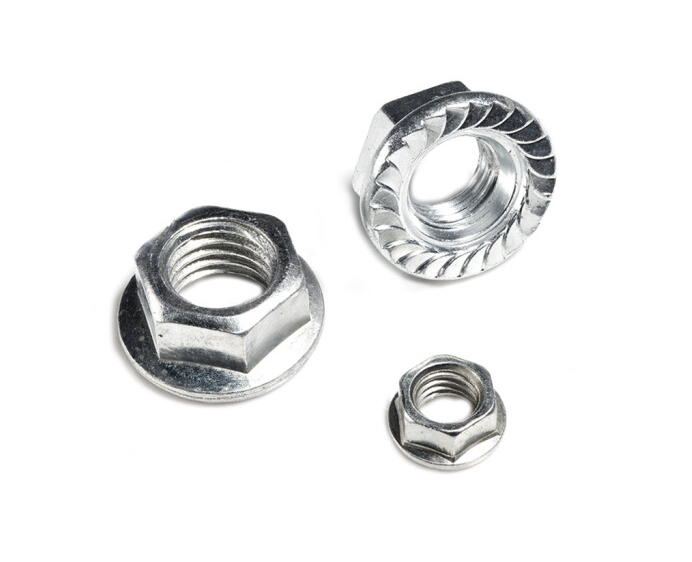
The hexagonal flange surface nut mainly includes a nut body, a flange surface is fixed at one end of the nut body, and a cap is fixed at the other end of the nut body; because the cap is set on the nut body, it has the Better sealing can effectively prevent rain, moisture, dust and other harmful substances from immersing in the nut body, preventing the nut body from rusting, thereby greatly extending the service life of the hexagonal flange nut.
Flange nut material: A3 low carbon steel, 35K high speed steel wire, 45# steel, 40CR, 35Crmoa;
Flange nut hardness grade: 4, 5, 6, 8, 10, 12;
Flange nut surface treatment: generally divided into two kinds of color zinc plating and white zinc plating, and generally cold galvanized;
Main specifications of flange nuts: M5, M6, M8, M10, M12, M16, M20 (more than M20 and M14, M18 flange nuts are not commonly used);
Flange nut thread specification: refer to the national standard of nut thread;
Flange nut national standard code: GB6177-2000;
Flange nuts use characteristics:
1. Piping: Use a pipe cutter or a grinding wheel cutter (the cutting blade should be dedicated) to cut the stainless steel pipe vertically according to the required length, clean the end burrs, and make a full circle;
2. Welding: The left and right conical flange flanges (with grooves, specially for the embedding of double-sided flanged gaskets) are respectively connected with the two piping ports that need to be connected, and are welded by tungsten argon arc welding (TIG welding). ;
3. Gasket: the left and right flanges are lined with double-sided flange gaskets;
4. Fastening: Clamp the two flange pieces with clamps, and then use fastening screws (hexagon socket bolts) to clamp the flange or fasten the handle (one end of the external thread is connected with the internal thread of the handle, and one end is connected by a fixed rivet) .
Inspection Difficulties
Tooth defect, hexagon opposite corner, dimension.
45-degree profile image of the first station: detecting the presence or absence of internal teeth.
Side image of the second station: check the total height of the nut and the height of the flange.
Image on the third site: Detecting hexagonal opposite sides.
Video under the fourth station: detection of inner hole diameter and flange diameter
